 | E-mail to Birds Korea |
 | KWBS |
in the Region
 | The Oriental Bird Club |
 | BirdLife International (Asia) |
February
Cold winters mean both temperatures and birding are similar to January, while increasingly frequent mild winters are marked by brief spells of rain or sleet, often followed by warmer sunshine, with maximum temperatures rising to 15°C or more in the southeast.
Many wildfowl are on the move by mid-month: Tundra Beans, Greater White-fronted and usually Swan Geese can be found at the Han-Imjin. Most Baikal Teal start to depart and by month’s end can become difficult to find in southern locations. Rooks and Daurian Jackdaws begin to move back into the Nakdong valley and near Gunsan. February sees the start of crane migration, with Hooded and White-napeds moving into South Korea from Japan. The now very scarce Relict and the rather more widespread Saunders’s Gull peak at several tidal-flat sites. At the end of the month the first spring migrants, such as Far Eastern Curlews, Hoopoes and Japanese Lesser Sparrowhawks start to arrive.
February highlights in recent years have included records of Baer’s Pochard, Steppe Eagle, Least Auklet, Snow Bunting, and Common Redpoll.
Outstanding national rarities in February include the second record of Green-winged Teal in 2008, and the second Arctic Redpoll, on Heuksan Island in 2009. Recent Korean firsts in February include Thick-billed Murre in 2006 and Himalayan Vulture in 2007.
(The following records are a compilation of our own sightings and records sent in by other observers. As well as being posted on the Birds Korea website(s), selected records are also forwarded to other Korean-language birding websites; records of threatened species are arranged and forwarded to Birdlife International and national authorities when appropriate; flag images and records are passed to bodies responsible for their coordination throughout the flyway; and all records sent to us are used to compile annual reports and to support the evolving understanding of the status of many of Korea’s birds.)
Junam Reservoir area, February 22, 23, 24 and 26
The highlight of a rather good period of birding in an area not far from Junam was the discovery of a superb drake Baers Pochard associating with a flock of about 120 Common Pochard on one of the lakes. Originally found by a visiting birder, Andrew Keaveney on February 21st, this bird was still present until March 6th at least.
Another surprise was the immature Stellers Sea Eagle that passed over the reservoir, attracting the attention of one of the local White-tailed Eagles, before flying away high to the southwest. Other raptors seen on these dates included 3 Northern Goshawks (including a juvenile bird perched in a tree close to the main walkway around Junam), a male Merlin, and 2 Cinereous Vultures on two dates. Geese and swans were well represented with the highlight being up to 5 Lesser White-fronted Geese associating with the various flocks of Greater White-fronts in the area.
Meanwhile, last winter’s hybrid Tundra/Whistling Swan made a reappearance. It was associating with a single Tundra Swan, my first personal record of this scarce species at Junam this winter. A good find on 26th was a flock of 200 Rooks wheeling distantly over the rice fields to the north of the main reservoir. Careful searching revealed a single black-and-white Daurian Jackdaw among them. This is the first time I have seen either species at Junam.
A Hoopoe and an early Spotted Redshank provided an early taste of spring in this generally sunny and mild period of weather. Less exciting but still noteworthy for Junam were 2 Common Shelduck, a high count of 6 Common Goldeneye, and 50 Northern Lapwing, all on 22nd.



North East Gangwon Province x river, lagoon and madified land, February 23
I went to Namdae Cheon near Yangyang on Sunday 20 February with Choi Jeong-Hwa to do a bird survey. There was still quite a bit of snow around, but a week of warm weather had left some open ground and there was open water along most of the river.
We found Pallas's Reed Buntings, Yellow-throated Buntings, Long-tailed Rosefinches, Far Eastern Larks and a Dusky Thrush to the south of the river close to the coast. There was a Peregrine Falcon on the sandbar between the sea and the river. Common Goldeneyes, Eastern Spot-billed Ducks, Mallards, a Garganey, Eurasian Coots and Common Mergansers in the river near Naksandae Bridge. Crossing the bridge we had a closer look at the gulls that had just come in from the sea. They were Slaty-backed Gulls, Vega Gulls and a Glaucous Gull.
After crossing the bridge we found some Tree Sparrows, Siskins and a Common Redpoll in the small pine trees next to the bridge. They were foraging on the side of the embankment where the snow had thawed enough to expose the ground.
Further upstream we saw more Dusky Thrushes along the side of the road. After slogging through the snow I counted about 500 Mallards just dowstream from the Salmon hatchery. We also saw a White-tailed Eagle next to the river there. Back on the road I spotted a Common Buzzard in a tree. I followed it with my binoculars when it flew and it stole what I think was a Dusky Thrush from a Eurasian Sparrowhawk. It's the second time this year I've seen a buzzard taking prey from another raptor, the first time was from a Peregrine Falcon North of Ganseong. There was a Black-backed Wagtail in the drain near the road as we got cloer to Yangyang.
After lunch in Sokcho we had a look at the birds at Cheongcho Lagoon. I counted about 1800 gulls, mostly Common Gulls, but also some Black-headed Gulls, Slaty-backed Gulls, Vega Gulls and Black-tailed Gulls. There were Great Cormorants, Great Crested Grebes, Mallards, Spot-billed Ducks, Eurasian Teals, Tufted Ducks, Greater Scaups. Common Mergansers, Smew, Eurasian Coots and a male Red-breated Merganser in the lagoon as well.
>Back at school I have been seeing lots of Brown-eared Bulbuls outside my classroom. Thay have been feeding on the fruit of the trees outside, both from the trees and on fallen fruit. The trees are called "San-su-yu" in Korean, Cornus officianalis. I took photos of some of them Tuesday morning, with 24 birds in one photo. Other birds that came on Tuesday morning were Naumann's Thrush and a Hawfinch. When I got to my classroom Wednesday morning I had a look and saw a bird I hadn't seen before. I quickly went home and got my camera gear and got photos of a Bohemian Waxwing. I saw one of the Brown-eared Bulbuls eating green leaves from a small succulent plant as well.
Overall, I would say there has still been some good birding to be had in spite of the snow.
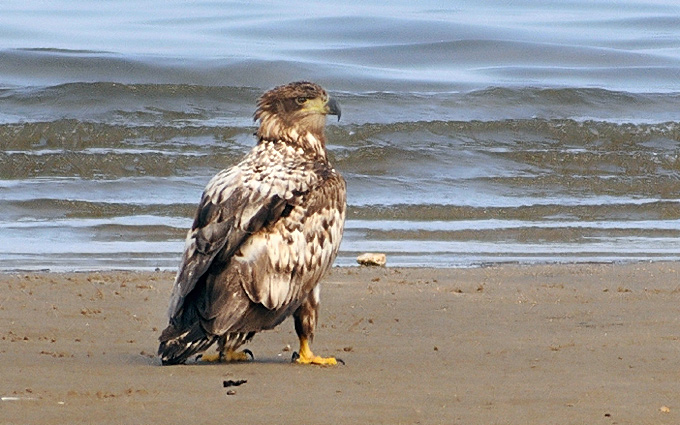
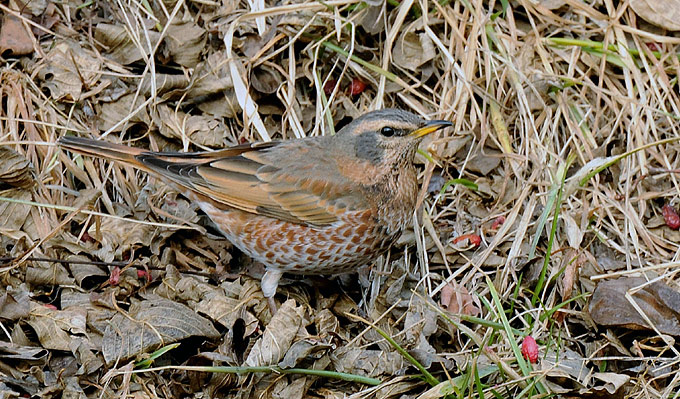
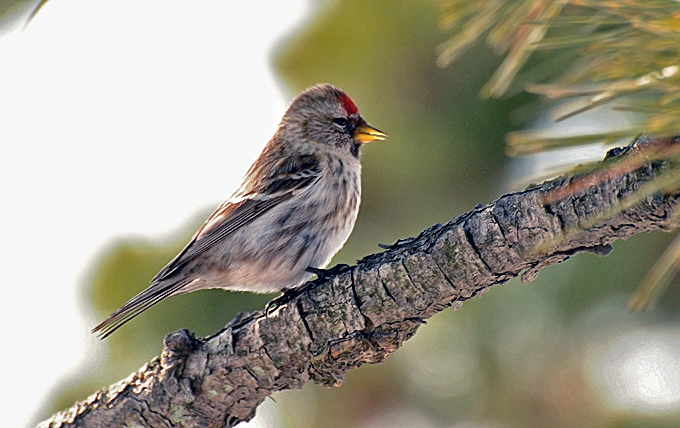
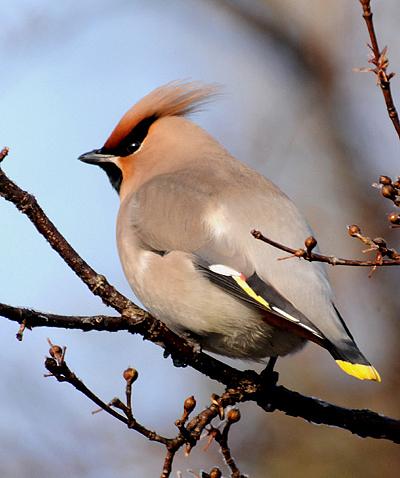
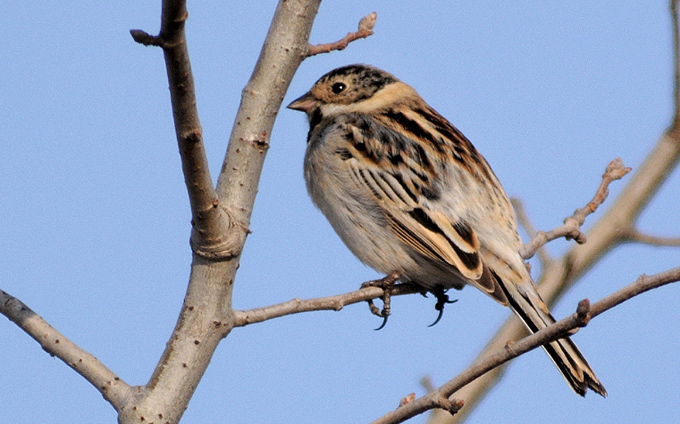
Yongam Lake, February 20
Massive habitat loss is underway throughout the Haenam area unfortunately, with new construction rapidly replacing the natural wetland.
On the lake itself, 1000+ Great Crested Grebe, 8 Whooper Swan, and a good number of Coot: in nearby trees, 2 Japanese White-eye seemed noteworthy.
Finally in late afternoon, concentrated in an area of reedswamp, a Greater Spotted Eagle, 2 Northern Goshawk, 2 Cinereous Vulture, 1 Upland Buzzard, 2 Peregrine, 17 Hooded Crane, and unusually soaring high, two Hen Harrier males. Overall numbers of Bean and Greater White-fronted Geese seemed rather low.
The traditional Black Stork wintering lake further north was entirely frozen and disappointingly birdless however.
Namhansan - Gimpo, February 11-18
Bright and cold in a fresh breeze at dawn (with a minimum of -4C), rising to a warm high of 7C on the last day. At Namhansan, best was a well-watched White-backed Woodpecker, with several small parties of Eurasian Bullfinch and two or more over-flying Pallas's Rosefinch also of note. In Gimpo, massive habitat loss through the construction of the new Han River City (as elsewhere advertised as 'Eco-friendly'), with one open area of rice-fields, however, holding two Cinereous Vulture, two Rough-legged Buzzard, one Upland Buzzard, and several flocks of grey geese - including some very approachable serrirostris Tundra Bean. In one goose flock of a few hundred birds, the Tundra Beans were joined by several Taiga Bean, 50 or so Greater White-fronted and three Lesser White-fronted Goose (while only two were noticed in the field, several rather poor digi-scope images confirmed the presence of a third individual). On the Han River en route to the airport, in amongst the ice debris, 12+ White-naped Crane and two White-tailed Eagle were the obvious highlights.
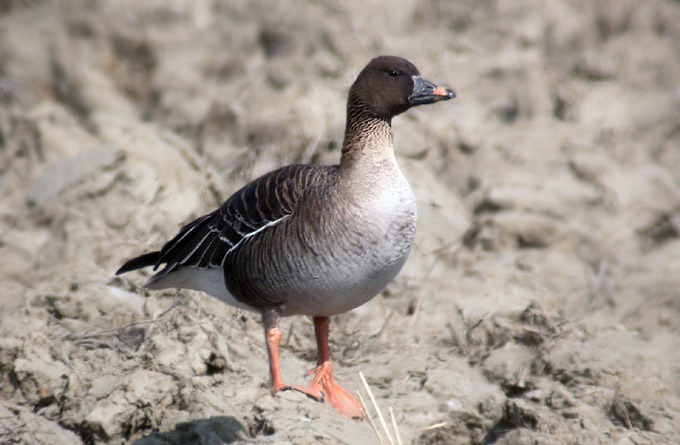
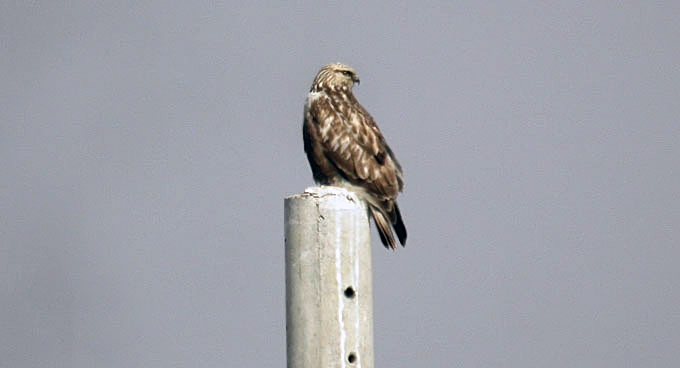
Hwajin Po - Yangyang, February 17
Overcast, with a minimum minus 4C rising to a maximum of 2C at midday. With much of the land covered in snow, a slightly slower day still included some gull-watching (with close encounters with e.g. Slaty-backed and Common Gulls) and prolonged views from land of two Long-billed Murrelet, two Brunnich's and probably ten Spectacled Guillemots, two Yellow-billed Loon, and several small rafts of both American and White-winged Scoters. In woodland there, probably ten Pallas's Rosefinch and several Long-tailed Rosefinch, but no sign of the Yellow-bellied Tit seen here two weeks before. At Yangyang, still rather few birds, though these included a White-tailed Eagle and several Dusky and Naumann's Thrushes feeding along the river.
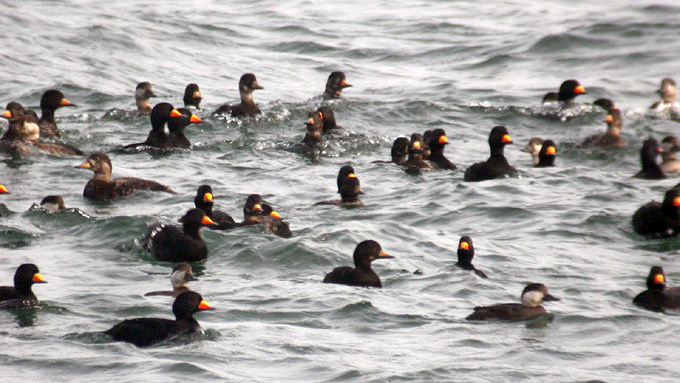
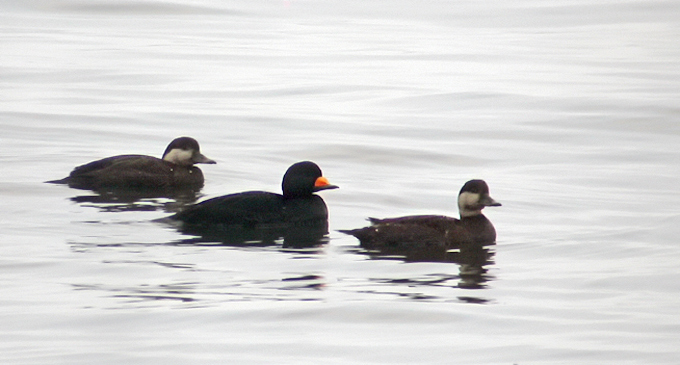
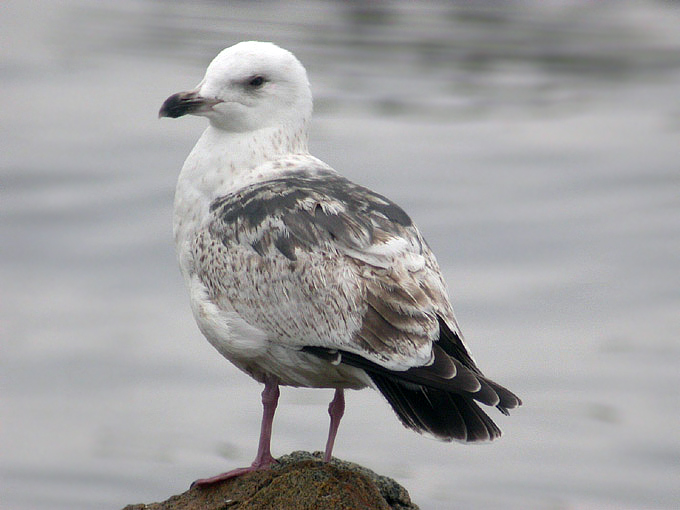
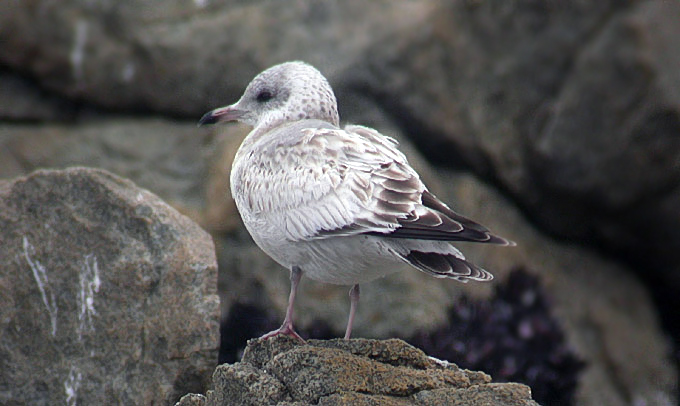
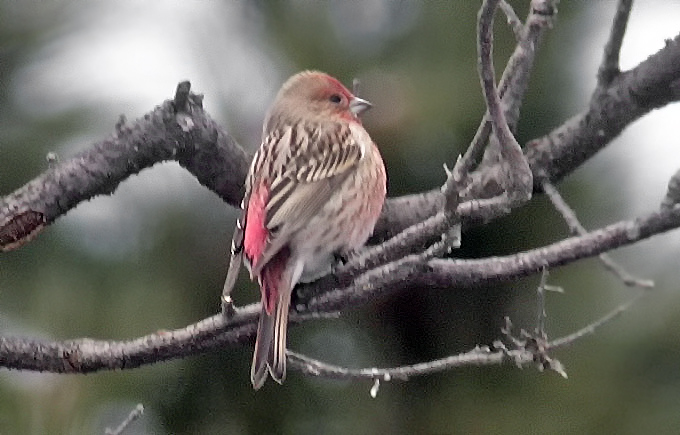
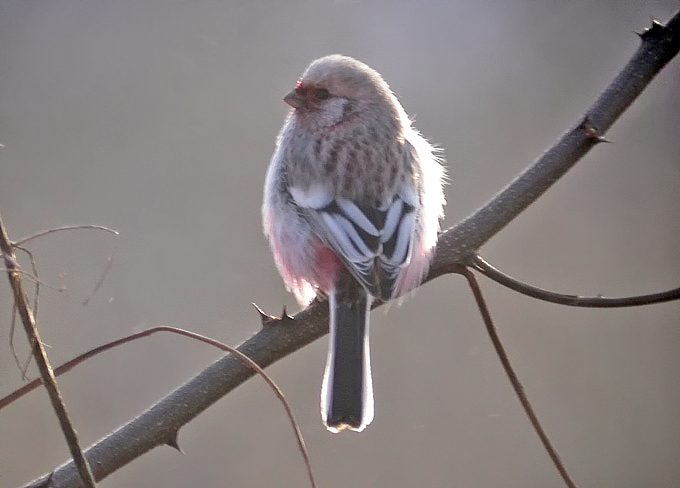
Okgye - Yangyang - Hwajin Po (Boat), February 16
After a long drive through some of the deepest snow any of us had ever seen, seawatching at Okgye found two or more Ancient Murrelet and two Yellow-billed Loon, while little of note was found at a snow-covered Yangyang.
Three hours on a boat off Hwajin Po during the afternoon was much more productive, with calm seas and fair conditions. A new national high count of 105 Spectacled Guillemot was recorded, along with two Brunnich's and two Thin-billed Murres but only one Ancient Murrelet (what has happened to the normally large numbers of this species present off the east coast each winter?), and probably five more Yellow-billed Loon, in addition to several hundred Arctic Loon and tens of Red-necked Grebe.
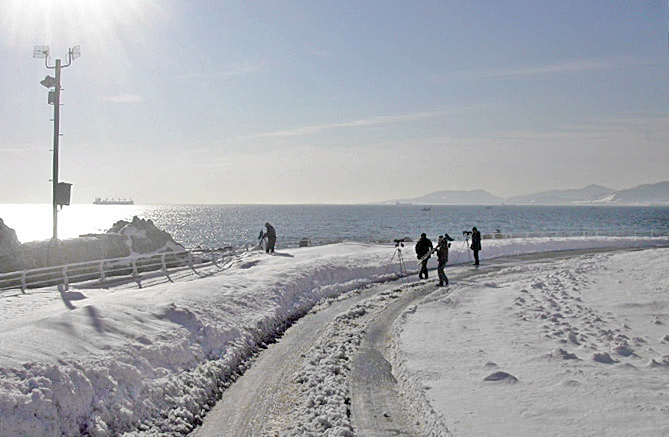
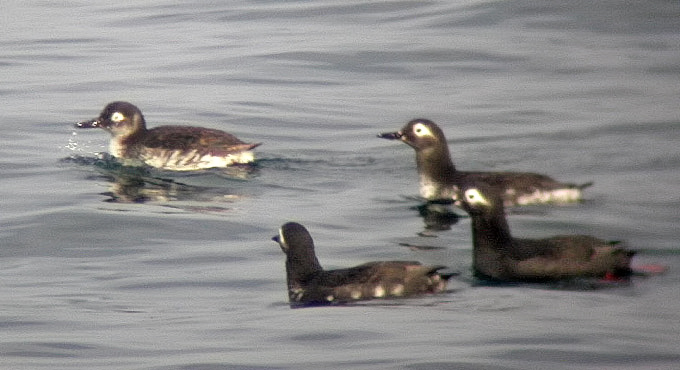
East Busan - Gyeongju -Guryongpo, February 15
-5C at dawn, warming quickly in Busan but remaining cool (with a maximum of 3C) further north. In Busan, four Grey Bunting, single Grey-headed Green and White-backed Woodpeckers, Ancient Murrelet and Japanese Bush Warbler were all seen well, as were flocks of feeding Brambling, Yellow-throated Bunting and Eurasian Siskin. Moving north, several thousand Rook and small numbers of Daurian Jackdaw were feeding in rice-fields near Gyeongju, while riverside vegetation held probably ten Meadow Bunting, one Chestnut-eared Bunting, three or four Siberian Accentor and perhaps 1200 Brambling ( broken up into several groups). The excellent birding continued at Guryongpo, with more Ancient Murrelet, two or more Rhinoceros Auklet, a single Glaucous-winged Gull, 700+ Red-breasted Merganser, 30+ Harlequin Duck, including one fairly close male, to close with a very large flock of Brambling (containing several thousand birds) going to roost.
Suncheon Bay, SE River & Joonam Reservoir, February 14
A cool dawn (-5C), followed by warming temperatures in the southwest, but by heavy snow and temperatures remaining at or below zero eastwards. At Suncheon Bay, more than 200 Hooded Crane (most watched distantly, some at very close range), with further highlights there another Rough-legged Buzzard, a single Japanese Quail and probably seven Chestnut-eared Bunting, (including one perched prominently for several minutes that was well digi-scoped by Team Yorkshire). On the SE River, monitoring of the wintering Scaly-sided Mergansers through the winter meant that 15+ were found easily and seen well, with single Long-billed Plover and Mandarin Duck watched there too in the same scope view as a Japanese Wagtail. 300 Brambling were also seen here, apparently moving north. At Joonam few birds in evidence after a day of snow, with best being several Pale Thrush and a Red-flanked Bluetail.
Saemangeum - Gomso Bay - Hwaum Temple, February 13
A cold start to the day (about minus 10C), warming gradually (especially southeastward) with a high of plus 4C. The day started with a sometimes thick, sometimes straggly line of Rook stretching several kilometres (likely totalling >20,000, with a further 5,000 -10,000 seen later), which carried with it a total of c.30 Daurian Jackdaw (including one fine pied bird). At the Mangyeung, bulldozers hard at work (as at so many other sites) converting one of the world's most important intertidal wetlands into nothing in particular - with best there 6+ Chinese Penduline Tit, and mixed groups of Common and Pallas Reed Buntings, while a large raptor remained unidentified. Near to the Dongjin, good views of a Rough-legged Buzzard, while at Gomso, four Oriental Stork, an unseasonal Osprey and a White-tailed Eagle. En route to Hwaum Sa, 17 Mandarin Duck seen well on a near-natural stretch of river, while at the temple itself, (only) five Hill Pigeon. Although hugely disturbed, one small patch of woodland there also held probably five Tristram's Bunting, single Pale and White's Thrushes and a Red-flanked Bluetail.
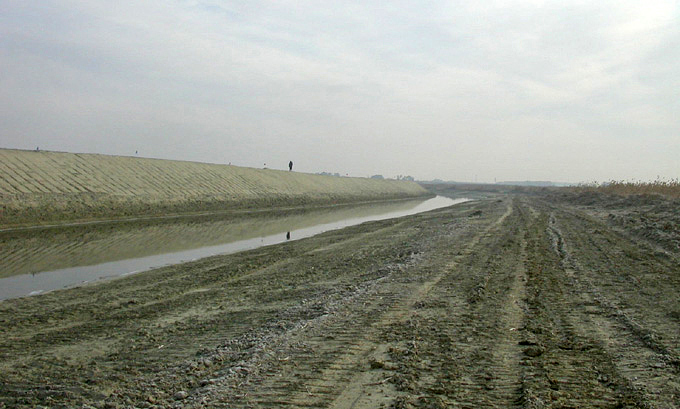
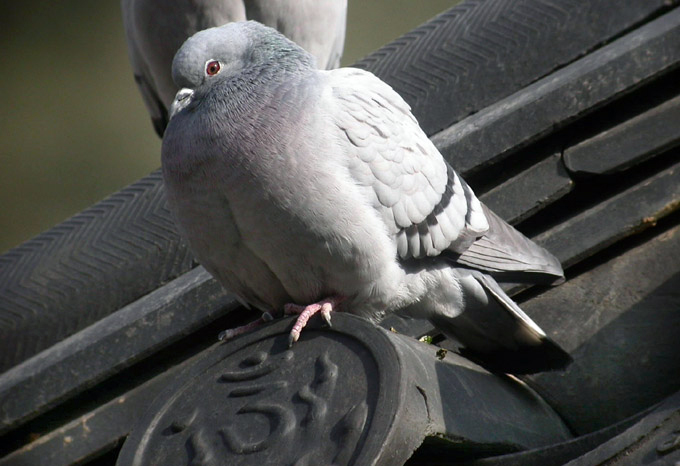
Cheorwon - Han-Imjin - Geum River/ Estuary, February 12
Light snow flurries and -11C at dawn, followed by sunshine and a strengthening wind, with a maximum of only -2C. At Cheorwon, waves of White-naped (c 500) and Red-crowned Cranes (c 200?) shortly after dawn provided a spectacular start to the day, further supported by good views of e.g. both Pallas's (NM total c 20) and Long-tailed Rosefinches (c 15), Siberian Accentor (2) and Hawfinch (>50), with overflying Cinereous Vulture (total c 30), the asiaticus Eurasian Nuthatch still, and a Common Treeceeper. From there, via the Han-Imjin (completely frozen still), down to the Geum Estuary where searching was rewarded with four Long-billed Plover, two Common Greenshank (very unusual so far north in winter) and best of all, prolonged views of 64 Swan Goose. These were followed by 2000 Baikal Teal on the 'river' and even more spectacular, c. 20,000 Baikals rising and falling over rice-fields between Gunsan and Iksan at/after dusk.
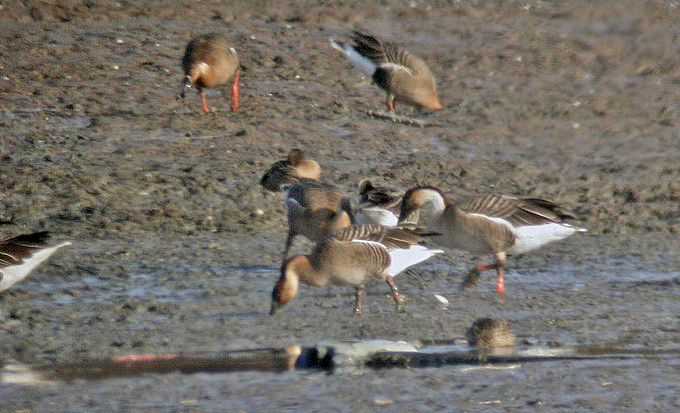
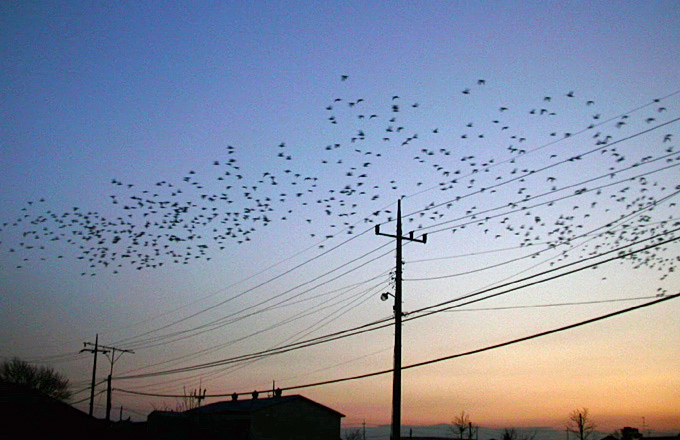
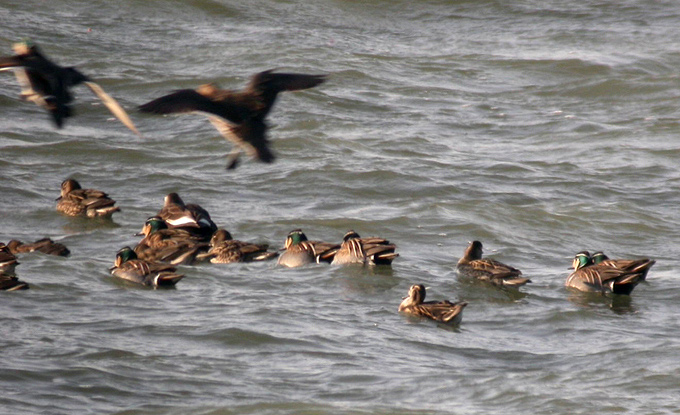
Song Do - Han River - Arboretum, February 11
Cold at dawn and throughout the day (forecast as minimum - 8C / maximum - 1C). At Song Do on the falling tide, many more birds than two weeks earlier - with e.g. c. 600 Eurasian Curlew, c. 460 Saunders's Gull and outstanding highlight 14 Relict Gull (4 adults and 10 First-winters). At the Han River, probably 6 or so White-tailed Eagle and one adult Steller's Sea Eagle (the female), with further highlights including excellent views of a Siberian Accentor (one of three present) and a Water Pipit, briefly feeding alongside a Buff-bellied Pipit. By contrast the arboretum was decidedly quiet, though still everybody enjoyed brief views of two very wary Solitary Snipe, and. several Eurasian Bullfinch and good views of a Brown Dipper and Naumann's Thrush.
Paldang, February 12
The wintering pair of Steller's Sea Eagles put on quite a spectacle today, chasing eachother and calling loudly (bizarre, electric "herk-herk-herk") over the mountainside. I suspect they may possibly roost up there overnight, because I've also seen them flying up to it at dusk before. One of them is actually missing a foot, although otherwise looks quite healthy and chubby.
Otherwise seen e.g. 27 Whooper Swan, a Long-billed Plover, Common Sandpiper, 2 Rustic Bunting, a Eurasian Kestrel and all the usual waterbirds.
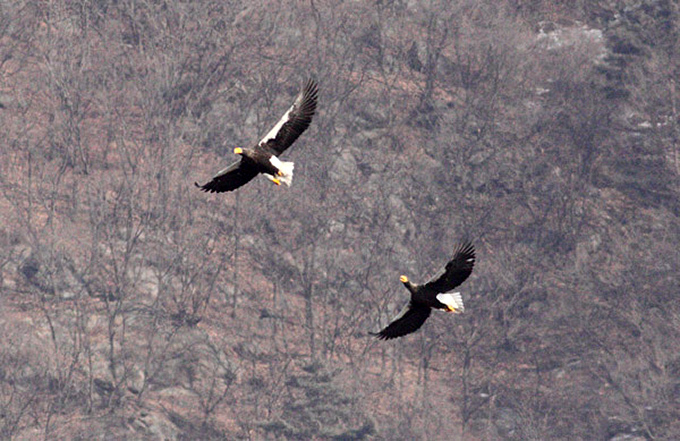
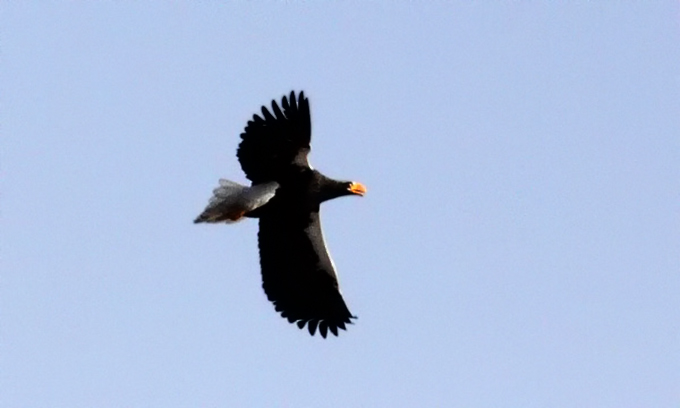
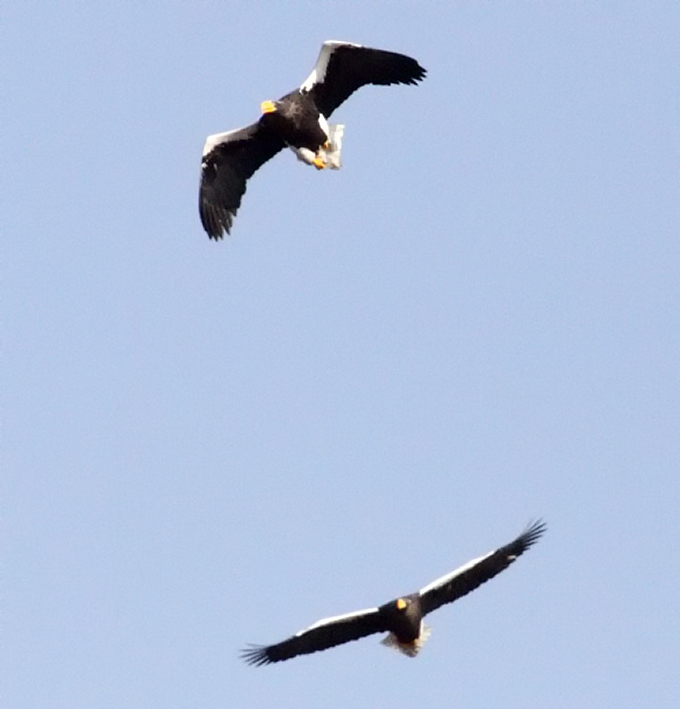
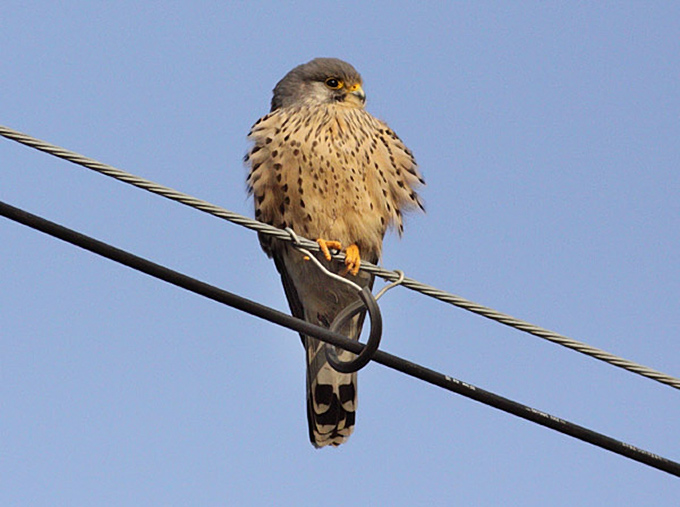
Shiwa, February 4
Very overcast, dull and largely frozen. Of most interest among 44 species were large numbers of waterfowl, including conservative counts of 1300 Goldeneye, 1100+ Greater Scaup, 1030 Mallard, 950 Common Pochard, 820 Spot-billed Duck, and 300+ Tufted Duck.
Birds of the shallower water were however in very small numbers however, presumably due to the many fishermen that have recently begun to use this area- for example only 2 Pintail, 20 Falcated Duck, c.10 Teal.
Some 300+ Bean and Greater White-fronted Geese were likewise regularly put to flight by disturbance from microlights, hang-gliders and kite-flyers.
Other enjoyable sights today were e.g. 3 White-tailed Eagle, an Upland Buzzard, 13 Whooper Swan, a Hen Harrier, a Northern Goshawk, 31 Coot, a handful of Common & Pallas's Reed Bunting, and most encouragingly a flock of 52 (predominantly Naummann's) and Dusky Thrushes.
Dadaepo and East Busan, February 4
Another calm, sunny and almost springlike day, with temperatures as high as 13C in the afternoon. We started early and were at Dadaepo by 9am where, due to the high tide, we initially failed to locate either of the Relict Gulls seen by Nial Moores a few days earlier. There were however 28 Black Kites on the sandbars, and 3 Western Ospreys in the general area.
While waiting for the tide to go out we decided to check out the woodland at Dadaepo, where we concentrated on an area known for holding wintering Grey Buntings. There was a lot of bird activity in the woods, and after very careful stalking we obtained superb views of a feeding flock of birds on the forest floor which included not only about 6 Grey Buntings (including at least 2 adult males), but also one or more likely two Tristram's Buntings which gave excellent views, as well as Yellow-throated Bunting, Pale Thrush and Brambling.
Moving to a different part of the wood, we encountered another pair of Grey Buntings, a Red-flanked Bluetail feeding near the water tap, and we had a good look at an Amur Leopard Cat.
Finally we returned to the estuary, where the tide had receded enough to reveal some mud and sandflats, and our target species - a first winter Relict Gull - was feeding on the mud, fairly distantly but in excellent light.
After our success at Dadaepo, we proceeded to a site in East Busan by taxi. Highlights here were another 3 Grey Buntings (making an excellent total of 11 for the day), a Japanese Bush Warbler, and offshore 18 Ancient Murrelets and single Pacific and Red-throated Loons.
Junam and Dongpan Reservoirs, February 3
On a beautiful mild, sunny afternoon, a leisurely walk mainly focusing on Dongpan was very productive for small passerines. Certain species were especially numerous, notably Yellow-throated Bunting (100+), Brambling (100+) and Eurasian Siskin (c.50). Accompanying the Yellow-throateds, one or perhaps two personata Black-faced Buntings were located along the eastern edge of Dongpan. Also noteworthy at Dongpan were one Little Bunting, a Red-flanked Bluetail, about 15 Dusky Thrushes and 3 Pale Thrushes, and an owl (probably Collared Scops Owl) heard calling several times but not seen.
At nearby Junam, still one Hooded Crane, about 120 White-naped Cranes in the general area, a Naumanns Thrush, another Little Bunting, two White-tailed Eagles and a Northern Goshawk.
Geum Estuary-Busan, February 2
With much 'milder' weather (including a low of -7C), a few hours birding at the Geum Estuary produced good views of e.g. Tundra Bean Goose, Black-faced Bunting and 11 or so Baikal Teal, before a return to Busan ahead of the Lunar New Year traffic. During the drive, surprises included a Common Starling over the highway near Jeonju, and an immature Steller's Sea Eagle sitting on ice on the West Nakdong (just before the toll booth!).
SE River-Gomso Bay, February 1
A search for Mandarin Duck eventually turned up a group of 17 or so (mostly males), along with a couple of Long-billed Plover and a mixed flock of 120 Northern Skylark and Far Eastern Larks, with the obvious highlight there being at least 26 Scaly-sided Merganser. At a deep-frozen Gomso Bay, sadly no sign of any Oriental Stork.
Birds Korea 1108 Ho, 3 Dong, Samick Tower Apt., 148-22, Namcheon-Dong, Su-Young-Gu
Busan, 618-762 Republic of Korea





